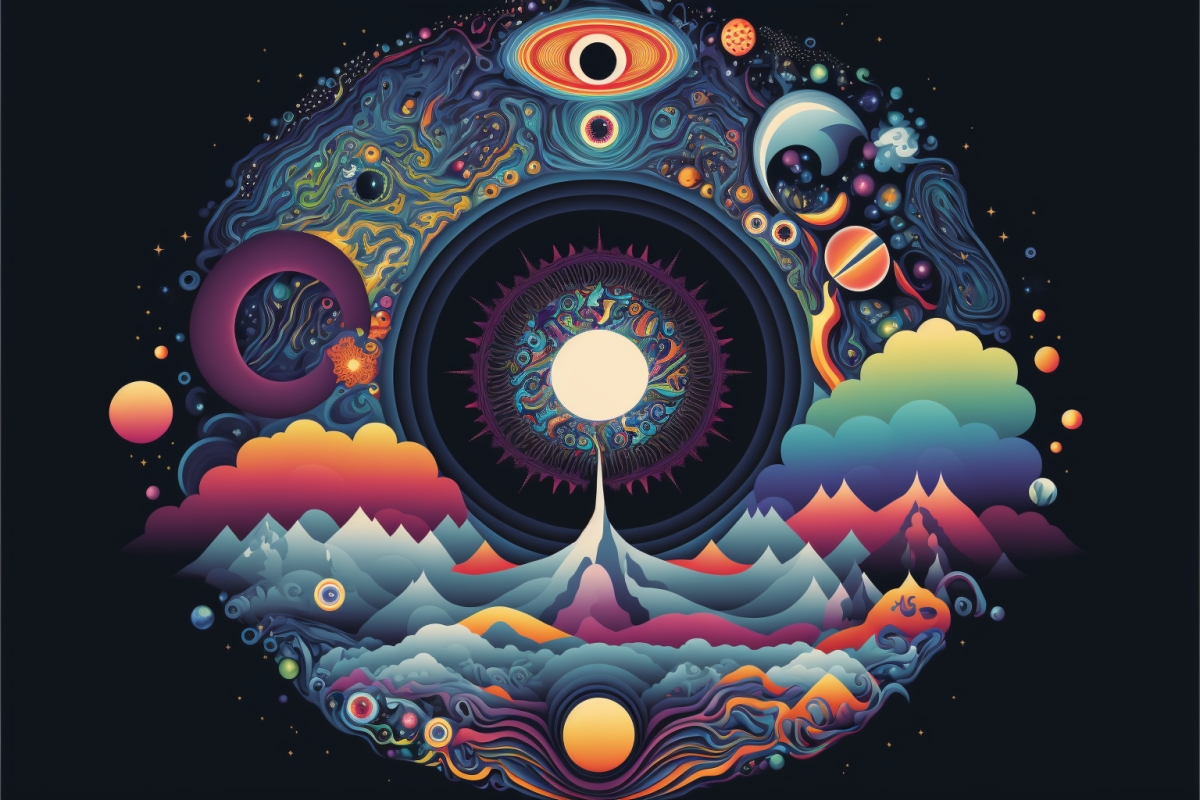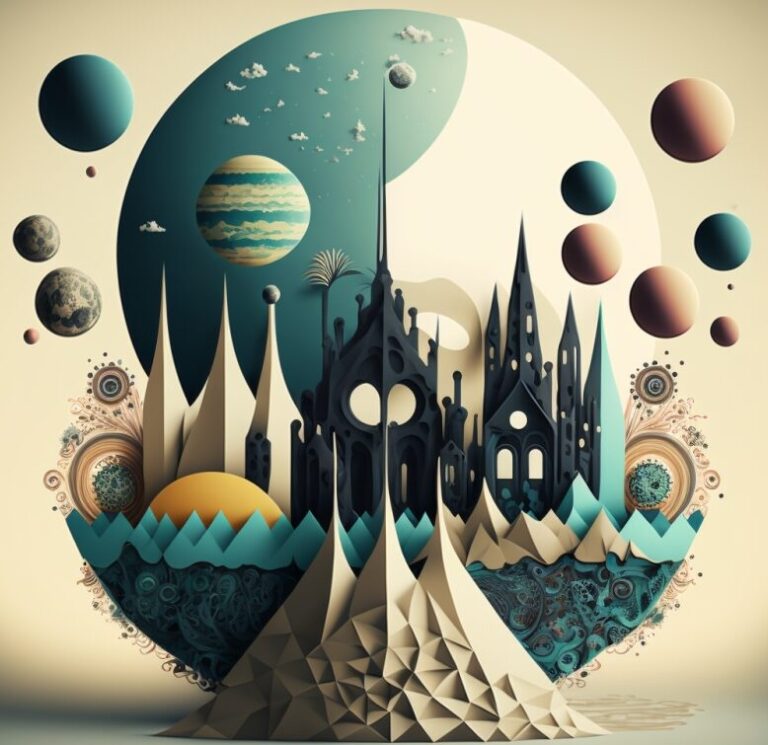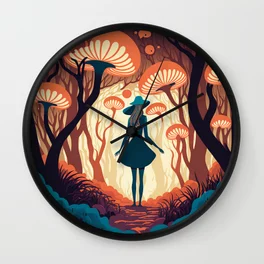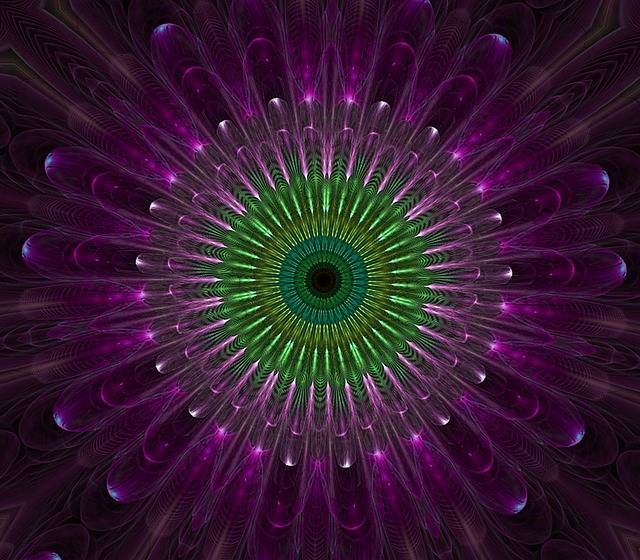The psychedelic art movement of the 1960s
The realm of psychedelic art saw significant aesthetic and societal transformation throughout the 1960s, as did other fields of art. Psychedelic Artists started experimenting with new and unusual methods of expressing themselves as the counterculture movement spread around the globe, and the resulting art was nothing short of mind-bending. The psychedelic art movement of the 1960s was born !
The vibrant, otherworldly style that characterized psychedelic art in the 1960s was seen in everything from brilliantly bright abstract paintings to surreal graphic design. It was a movement of iconic and significant art that questioned the existing quo and allowed people to perceive the world in a completely different manner.
Whether you enjoy the 1960s psychedelic art movement or just want to learn more about this intriguing era in art history, this blog post is the perfect place to start. So sit back, relax, and let your mind wander as we delve into the incredible world of 1960s psychedelic art.

Definition of psychedelic art movement of the 1960s
The mid-1960s saw the emergence of the psychadelic art movement, which was defined by the use of vivid, colorful, and sometimes abstract motifs meant to create the feeling of being in an altered state of consciousness.
This period’s counterculture had a significant impact on this kind of work, which was frequently linked to the popular usage of hallucinogens like LSD and psilocybin. Posters at music festivals, record covers, and other types of media frequently featured psychedelic imagery, which was frequently connected to the hippie movement.
Despite being brief, the psychedelic art movement had a significant effect on both popular culture and art.
The Art Nouveau movement, which began in the late 19th century and was defined by the use of organic, flowing lines and a focus on nature, was not directly related to the psychedelic art movement of the 1960s. However, a variety of other artistic movements and styles had an impact on the psychedelic art movement, and it’s probable that certain aspects of Art Nouveau were absorbed into psychedelic art. For instance, both Art Nouveau and psychedelic art share the use of organic, flowing lines and a focus on nature. However, the 1960s counterculture and the usage of hallucinogenic substances were the key inspirations on the psychedelic art movement.
The pop art movement, which began in the 1950s and was distinguished by the use of popular culture iconography and the infusion of mass-produced items into art, may have had an impact on the psychedelic art movement of the 1960s. Pop art, like the psychedelic art movement, was a response to the dominant society of the day and aimed to question conventional aesthetic standards.

Brief overview of the counterculture movement of the 1960s
In contrast to the dominant ideals and social standards of the day, the counterculture movement of the 1960s was a social and cultural movement. This movement, which was connected to the civil rights movement, feminist movement, anti-war movement, and gay rights movement, was defined by a rejection of established institutions, authority, and popular culture.
The hippie movement, which was defined by the use of psychedelic substances, a rejection of consumerism, and an emphasis on peace, love, and freedom, emerged in the 1960s and was closely related to the counterculture movement. In addition to having a big influence on pop culture, the 1960s counterculture movement is still regarded as a period of social and cultural upheaval.
Influence of hallucinogenic drugs on the psychedelic style of art of the 1960s
The psychedelic art movement of the 1960s had a significant impact on the type of work that developed. Hallucinogenic substances like LSD and psilocybin were commonly used. Many artists were influenced by these experiences to create works of art that attempted to recreate similar states of consciousness since these substances were known to induce vivid and frequently abstract visual experiences.
Intricate, abstract patterns and vivid colors were frequently used in psychedelic art, and many painters aimed to produce pieces that would “trip out” the viewer and inspire a feeling of transcendence or unity with the cosmos. The counterculture movement of the time, which defied conventional norms, may be seen in the effect of hallucinogenic substances on art.

Connection to the hippie movement
The hippie movement, a youth-focused subculture that originated in the United States and extended to other areas of the world, was closely related to the psychedelic art movement of the 1960s. Hippies were defined by their rejection of conventional wisdom, emphasis on peace, love, and independence, and frequent use of psychedelic substances.
Hippie ideas and aspirations were expressed through the psychedelic art movement, which was frequently employed to further the counterculture and its principles.
The usage of hallucinogenic substances served as an inspiration for many artists connected to the psychedelic art movement, who also participated in the hippie movement and produced works of art that intended to conjure altered states of consciousness. The relationship between the hippie and psychedelic art movements reflected the time’s cultural and social turmoil as well as the yearning for experimentation and change.
Characteristics of the psychedelic art movement of the 1960s
Designs with brilliant colors: Psychedelic art is renowned for its use of complex patterns and colors. Many artists aimed to produce pieces that would “trip out” the spectator in addition to being aesthetically appealing.
Psychedelic patterns are complex, abstract images that frequently feature the use of vivid, intense colors and a feeling of motion or flow.
A sense of the otherworldly or transcendent experience is intended through the use of abstract and surrealistic elements in many psychedelic artworks.
Transcendence or changed states of consciousness should be evoked: One of the major aims of psychedelic art was to elicit a feeling of transcendence or altered states of consciousness in the observer. A sensation of oneness with the cosmos and “taking the audience on a trip” were two things that many painters aimed to achieve with their works.
Hallucinogenic drug use has a significant impact on the style and subject matter of psychedelic art. Examples of these substances include LSD and psilocybin. Many artists were motivated to create works of art that attempted to conjure comparable states of consciousness by the vivid and sometimes abstract visual experiences brought on by these substances.
Association with the hippie movement: The hippie movement, a youth-focused counterculture that originated in the United States and extended to other areas of the world, was strongly associated with the psychedelic art movement. Hippies were defined by their rejection of conventional wisdom, emphasis on peace, love, and independence, and frequent use of psychedelic substances.

Among some psychedelic art examples are:
• Music festival posters: Psychedelic art was used on posters for several music festivals in the 1960s, including the Woodstock Music and Art Fair and the Monterey Pop Festival. These abstract, frequently colorful, posters served to promote the counterculture principles and values of the period.
• Album covers: The 1960s saw a considerable effect of the psychedelic art movement on the music industry, and many album covers from that era include psychedelic imagery. The Beatles’ “Sgt. Pepper’s Lonely Hearts Club Band” and The Jimi Hendrix Experience’s “Are You Experienced?” are two famous instances.
• Other media: Psychedelic art was also widely used in publications including magazines, novels, and commercials. These works frequently served to promote the counterculture ideas and goals of the period by utilizing bold, vivid colors and abstract, surrealistic themes.
Notable psychedelic artists
- Peter Max was an American artist of German descent who specialized in vivid abstract paintings and the use of psychedelic hues. He rose to prominence as one of the movement’s most well-known painters, and many posters, record covers, and other pieces of media have featured his work.
- Stanley Mouse: An American artist most recognized for his vibrant, ornate creations and connections to the Grateful Dead. He designed many of the band’s classic album covers and flyers, and the psychedelic art movement used his work heavily.
- Victor Moscoso: An American artist of Spanish descent, Moscoso was well-known for his use of vivid, psychedelic hues and his elaborate, abstract patterns. One of the pioneers of the 1960s rock poster artists, he created many of the enduring posters for the San Francisco music scene.
- American artist Rick Griffin was renowned for his vivid, surrealist creations and his connections to the Grateful Dead. He designed many of the band’s classic album covers and flyers, he was appreciated by the psychedelic youth culture of the time that used his artistic expression heavily.
- Wes Wilson: A pioneer of the psychedelic art movement, Wilson was an American artist. He is renowned for his complex, abstract patterns and his vivid, expressive artwork. Hallucinogenic substances had a significant effect on both of these aspects of his work. He is well recognized for designing many of the recognizable posters for the venerable music venue The Fillmore in San Francisco.

The Chambers Brothers (The Matrix, 28 March-6 April 1967)
1967
Offset lithographic poster
Gift of Robert Bradford Wheaton and Barbara Ketcham Wheaton
© ’67 Neon Rose
Photograph: © Museum of Fine Arts, Boston
Impact of the psychedelic art movement.
The psychedelic art movement had a profound effect on both popular culture and the visual arts. Despite the movement’s brief existence, it continues to have an impact on modern art and design. Modern art frequently employs vivid, vivid hues and abstract, surrealistic themes, and many current artists’ work exhibits the influence of the psychedelic art movement.
The music business was significantly impacted by the psychedelic art movement as well. Abstract, surrealistic designs are still often used on album covers and music videos today, just as they were on many album covers in the 1960s.
A focus on peace, love, and freedom as well as other counterculture principles and ideas from the psychedelic art movement continue to have an impact on modern culture. Popular culture has been impacted by the cultural and social upheaval of the 1960s for decades and is now regarded as a period of great change and innovation.
Psychedelic Rock impact on the psychedelic movement of the 1960s

The psychedelic rock music genre, which debuted about the same time and was defined by the use of hallucinogenic, otherworldly sounds and lyrics that intended to elicit altered states of consciousness, was closely related to the psychedelic art movement of the 1960s. Numerous psychedelic rock bands, including The Beatles, The Grateful Dead, and The Jimi Hendrix Experience, included psychedelic artwork on their album covers and in their promotional materials, which contributed to the widespread adoption of the art form and served to link it to the music genre.
The relationship between the two was further strengthened by the inclusion of psychedelic music and art style at several 1960s music festivals, including the Woodstock Music and Art Fair and the Monterey Pop Festival. Psychedelic rock had an impact on the psychedelic artist movement because it embodied the counterculture ideals of the time, which rejected conventional values and standards in favor of peace, love, and freedom.
Comic books
The comic books business was significantly impacted by the 1960s psychedelic art movement, and a lot of comic books from this era had psychedelic themes and artwork. Particularly contentious or experimental content was frequently found in self-published underground comics, which frequently contained psychedelic imagery and themes. “Zap Comix” and “Yellow Dog,” two noteworthy psychedelic comic books from this era, both included work by underground comics creators such Robert Crumb and Victor Moscoso.
The mainstream comic book industry was also affected by the psychedelic art movement, and many superhero and science fiction comics from the 1960s contain psychedelic imagery and themes. For instance, the cover of “The Silver Surfer” #1, which was released in 1968, shows the title character in a psychedelic pose. The psychedelic art movement had an impact on comic books during a period when there was a lot of social and cultural change, as well as a thirst for experimentation and counterculture ideals.

Conclusion
In conclusion, the 1960s psychedelic art movement was a distinctive and significant art movement that appeared amid a period of social and cultural upheaval.
The use of vivid, colorful, and sometimes abstract motifs in this movement sought to suggest the sensation of altered states of consciousness. The counterculture of the era, which included the hippie movement and widespread use of hallucinogenic substances, had a significant impact on the psychedelic art movement.
Although the movement was brief, it left a lasting impression on art and popular culture, and brilliant, vivid colors and abstract, surrealistic elements are still often used in modern art. It’s crucial to comprehend the psychedelic art movement’s cultural background to appreciate the significance and influence of this style of art.

Psychedelic art movement of the 1960s’ style from the Psychedelic Fabrica posters collection – Contact Us
Newsletter
Get the latest updates on new artworks, collections, and exclusive offers.



